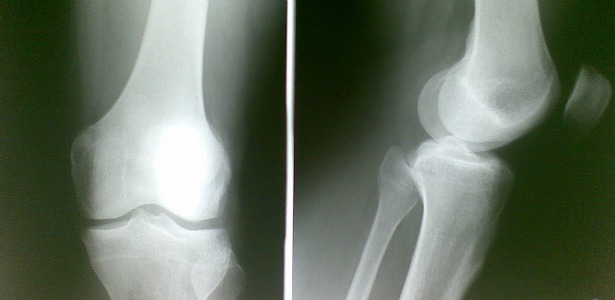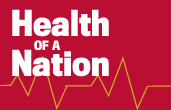An Arthritis Treatment Worthy of the Pope and Kobe
Regenokine isn't approved by the FDA (yet), but the treatment for joint pain is promising.

mtkopone/Flickr
The likes of Kobe Bryant, Alex Rodriguez, Vijay Singh, and Pope John Paul II are among a growing number -- myself included -- who have sought a novel form of anti-inflammatory arthritis/tendinitis treatment that, until recently, was only available in Germany. If you haven't already heard about it, it's called Regenokine, and it's among a trend moving orthopedics away from operating rooms and into the realm of the molecular -- from mining titanium to mining the anti-inflammatory molecules coursing through our veins.
The premise is that the critical problem in arthritis is inflammation, not the mechanical consequences that we see on X-rays (like worn-down bone, spurs, or a slipped disc). That's not to say that the mechanical problems should be ignored, but that the relief of pain and the opportunity for the joint to restore some degree of healing is dependent on reducing or eliminating inflammation. Most people employ over-the-counter drugs (like ibuprofen) and a host of prescription anti-inflammatories for osteoarthitic pain and disability. But these drugs are limited in their effectiveness, must be taken daily, and bring with them a variety of risks and side effects, including gastrointestinal irritation and interference with platelet functioning (which increases one's risk of bleeding).
By increasing the amount of anti-inflammatory proteins in the joint, Regenokine is aimed at addressing the inflammatory disease process. The "active ingredient" in the injections is Interleukin-1 receptor antagonist (IL-1 Ra), a natural substance in our bodies. Introducing it back into the body that produced it is called an "autologous" treatment. The body should not reject it because it is recognized as its own.
It was back in July of 2008 that I first stepped off of a Lufthansa airlines flight and entered customs in Dusseldorf, Germany, with my mother-in-law and sister-in-law, to begin a week's treatment with what was then called Orthokine. I was there to have the treatment in both my knees; my mother-in-law was to have it in the one knee that surgeons back home said was in need of replacement.
We were two in a long string of orthopedic pilgrims who had come to see "The Professor" in this university town near Cologne, close to where Germany borders Holland and Belgium. Quietly, below the radar, scores of American athletes, celebrities, and health professionals (as well as others from nations around the world) had come to Professor Peter Wehling's clinic then on Königsallee, a charming urban boulevard with an unending canopy of trees and a canal rushing down the center, to look into this treatment that was not available anywhere else in the world. I had referred two of my own patients for his evaluation and was now about to be a patient myself.
I had sent digital images of X-rays and MRIs of my mother-in-law's and my knees in advance of our evaluation in Germany. Dr. Wehling looked at the films and reports and wrote back saying my arthritic knees had about a 70 percent chance of a response that could last two to three years (which might then respond again to another course of treatment). He said my mother-in-law had stage 3 arthritis and that the treatment might help for a year. So we decided to try.
On our first day in Dusseldorf, we went to Dr. Wehling's offices. Our consultation then began with a meeting in Dr. Wehling's office. Wehling speaks fluent German, French, and English, and some Spanish and Italian. He explained the procedure, was modest but confident about the success of his treatment, and invited questions and discussion. We then had blood drawn, about 100 cc (a bit less than three ounces), and were given a precise time to return the next day and the three days thereafter for our treatments.
While we walked about Dusseldorf and explored the beer gardens, the lab technicians were at work with our blood samples. A naturally occurring anti-inflammatory protein in everyone's blood (but unique in its composition in each person) was isolated from our samples and processed by a technique that Wehling developed. Our respective proteins were replicated thousands of times overnight (work is underway, today, to achieve same-day replication, which will shorten the time needed for the treatment).
By the time we returned the next day, each of our individual anti-inflammatory proteins were in a concentrated solution and ready to be injected into our joints. My mother-in-law and I received daily injections into our knees of our naturally produced -- but now highly aggregated -- protein. The shots resemble those that orthopedists and primary care doctors give in the United States, except that their syringes are loaded with steroids (or some other substance aimed at providing limited and short-term relief and which is generally covered by insurance in the United States).
The procedure took less than 15 minutes. We left to explore the town, travel by train in the region, but always to return, on time, for the next day's appointment. There were no restrictions on movement. The experience was more of being a tourist than a patient.
Six weeks later, I was on a 10-day hike, carrying weight, like I couldn't for many years prior.
For me, the treatment effect lasted about 3 years, during which I continued to exercise more than the normal person (but I had given up impact and torque sports like basketball, tennis, and downhill skiing years earlier). For my mother-in-law, she had significant relief but did require a knee replacement one year later. She has done quite well with a new knee.
Last fall, I threw a football for several hours with my teenage nephews. In the days afterward I developed a hot and painful right shoulder tendinitis. I already had intermittent, mild tendinitis in both shoulders but this post-football inflammation was not to be ignored. With rest, ice, and anti-inflammatories I got better but not well. Despite physical therapy I still had limited range of motion, pain and could not sleep on the right shoulder. I decided it was time to again see about Regenokine. Might as well get booster shots for the arthritic knees while the tendinitis in my shoulders was treated.
But this time I did not need to go to Germany. I could be treated in southern California by Dr. Chris Renna. He recently trained with Wehling and began offering the anti-inflammatory treatment in his offices in Santa Monica. The protein injection treatment does not require, nor have, FDA approval. Obtaining approval in the States could take five years and tens of millions of dollars. Besides, some say that opposition could quickly mobilize since it would compete with medications, joint injections and surgery. This is unfortunate since the result is that it remains inaccessible and unaffordable to far too many who could benefit, perhaps even avoiding more invasive and costly interventions.
This past May, I arrived at LAX and went straight to having X-rays taken of both shoulders and knees in a nearby imaging facility. I then saw Chris Renna and his daughter Gina Renna, who runs the practice, and had my blood drawn just like in Dusseldorf. Instead of four days of treatments, this time, I would have six. Each day, at a scheduled time, I went to the Wilshire Boulevard office, quite serene in its feng shui, and had injections in all four joints.
The shoulder, I discovered, is more complicated than the knee: The injections were generally done from both the front and rear of the shoulder joint and required visualization by ultrasound to make sure they hit the right place. Still, it worked, and I had no problems.
What does Regenokine cost? The fees are the same in both Dr. Wehling's and Dr. Renna's practices but since Wehling is in Germany the cost to an American patient is different depending on the exchange rate between the U.S. dollar and the Euro. In Santa Monica, the fee for the first joint is $9,000, the second is $3,000, and each subsequent joint is $3,000. In both their practices all joints are generally treated simultaneously, which results in lower costs in time and money. In New York City, a group of orthopedic surgeons has begun to offer the treatment. Their fees may be different depending on their current policy for whether they treat each joint individually (sequentially) or if all affected joints are injected at the same visit and whether they are charging a facility fee in addition to the injection fee.
Some people will seek relief in one joint; others two; some, like me, even more. However you figure it, this is a costly treatment that is not covered by any insurance that I know of. I might have needed shoulder surgery or could have had a knee replaced by now; if I did, my health insurance would have paid for that. This treatment is not cosmetic surgery, hair transplant, liposuction, or other (expensive) ways we pursue vanity. It is a means of reducing pain and disability. As yet, sufficient scientific evidence has not been collected to demonstrate its ability to avert or delay surgery, and thus save money. If Regenokine is apt to work for you (as determined by a conservative assessment by a physician who is expert in this treatment) and you can afford it, you can decide if it is money well spent.
I would be remiss, as both Drs. Renna and Wehling stress, if I did not add that good musculoskeletal health is more than injecting an anti-inflammatory agent every few years into an aching and inflamed joint. Their treatment program, simply laid out in a recent e-book by them called The End of Pain, emphasizes healthy eating, sufficient (not too much, not too little) exercise, adequate sleep, and a balanced life -- not free of stress but where an individual learns to manage and mitigate the stress that has become a staple of post-modern life. Their approach is holistic in the proper sense of the word: body and mind, biology and psychology, and work and relationships all factor into our experience of wellness or illness -- whether we feel our pain or dysfunction in our joints, or any of the organs in our body, or in our moods and thoughts.
On a daily basis I realize how the absence of pain and limitation are remarkable sources of energy and optimism. I think how fortunate I am to have been able to know about and afford this treatment. That's not fair. The relief of pain is not for the privileged alone -- a view not lost on Peter Wehling and Chris Renna. But they don't make the rules for medical services or their financing in the United States, Germany, the E.U., or anywhere else. While many recognize the inequities of medical care worldwide, we have yet to equitably respond to the suffering and disability of osteoarthritis and tendinitis (and countless other conditions) -- and the injustice that comes in its wake.
